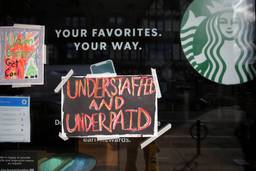Almost every piece of legislation passed in Washington these days is pushed forward in the name of creating jobs. Our elected officials are right to be concerned with the issue; Americans want stability and economic security in their lives.
But the predicament we face is hardly new. Over the past several decades, each “recovery” from recession has had fewer jobs attached to it, and those jobs that appear do not restore former standards of living to working people.
If we’re going to change this, we must have public policy which demands accountability. That starts with tax breaks. If businesses receiving tax cuts say they are going to create jobs, they should prove it. Conservatives frequently contend that government is irresponsible and should run more like a business. But what sort of business undermines its base of revenue without demanding something concrete in return?
You wouldn’t go to a mechanic and agree to shell out hundreds of dollars even if the shop utterly fails to diagnose and fix your car. Yet tax cuts for the wealthy and tax loopholes for corporations are doing just that. They are handouts for the powerful given on blind faith.
The evidence that these handouts actually result in decent jobs for American workers is distressingly thin.
To understand the nature of unemployment in our country today, we must appreciate that a huge gulf has formed between traditional measures of business success and the actual wellbeing of working families. Traditionally, increased productivity was supposed to translate into increased wages for workers. But, as the Economic Policy Institute has documented, “from 2002 to 2007, productivity rose 11 percent but the hourly wage for high school and college educated workers fell.” The only ones benefitting are those at the top.
Timothy Noah recently reported in his well-regarded series on inequality at Slate that, “From 1980 to 2005, more than 80 percent of total increase in Americans’ income went to the top 1 percent.”
The last quarter has been a difficult one economically, right? That’s certainly true for the 15 million Americans who are out of work and the record number of the jobless who have been looking for work for more than 6 months. But it’s hardly the case for big business. In fact, in the third quarter of 2010, corporate profits hit a record high. As the New York Times reported, “Corporate profits have been doing extremely well for a while. Since their cyclical low in the fourth quarter of 2008, profits have grown for seven consecutive quarters, at some of the fastest rates in history.”
Since the Clinton era, it has been popular even among Democrats to argue that investment in capital and spurring the economy through low tax rates would lead to job creation. But the evidence amassed since then does not support this idea. As Jack Rasmus recently noted, the period between 2001 and 2004, when George W. Bush pushed through a series of tax cuts for investors and corporations in the name of creating jobs, actually saw some of the weakest job creation rates on record following a recession.
We have to face the fact that the ties between corporate success and the economic health of the wider community have been completely severed. To re-link business growth and job creation policymakers must do three things:
First, if government is going to subsidize the private sector through tax breaks or loopholes, it must ensure that the investment brings public return, in the form of jobs. Individual businesses getting tax breaks in the name of job creation should be held accountable for demonstrating that their efforts are actually working. If they can’t convincingly show that new jobs are being produced, the loopholes should be closed. Or better yet, the businesses should return the money they received.
Second, we must make sure the jobs being created are good ones, with living wages. The most effective way of doing this is to restore the ability of workers to collectively bargain with their employers. Historically, in times when workers have been able to exercise their right to form unions, the American middle class has grown alongside its businesses. The decline of organized labor in recent decades has been a main reason for the delinking of corporate profits and community wellbeing.
Third, when businesses are not creating enough jobs for American workers, we need to have a safety net for those left behind. Right now, those who are disconnected from employment are falling further and further down, and often the plunge can be fatal in terms of a worker’s future prospects. Absent a net, it is almost impossible to get the long-term unemployed back into the job market.
If we’re sincere about tackling the current crisis of unemployment and allowing working people to bounce back, we have to get serious about reconnecting productivity and wages. Current blind faith tax breaks are not doing that. Let’s try some real accountability for job creation.
This article originally appeared at The Huffington Post.

I hope you found this article important. Before you leave, I want to ask you to consider supporting our work with a donation. In These Times needs readers like you to help sustain our mission. We don’t depend on—or want—corporate advertising or deep-pocketed billionaires to fund our journalism. We’re supported by you, the reader, so we can focus on covering the issues that matter most to the progressive movement without fear or compromise.
Our work isn’t hidden behind a paywall because of people like you who support our journalism. We want to keep it that way. If you value the work we do and the movements we cover, please consider donating to In These Times.







